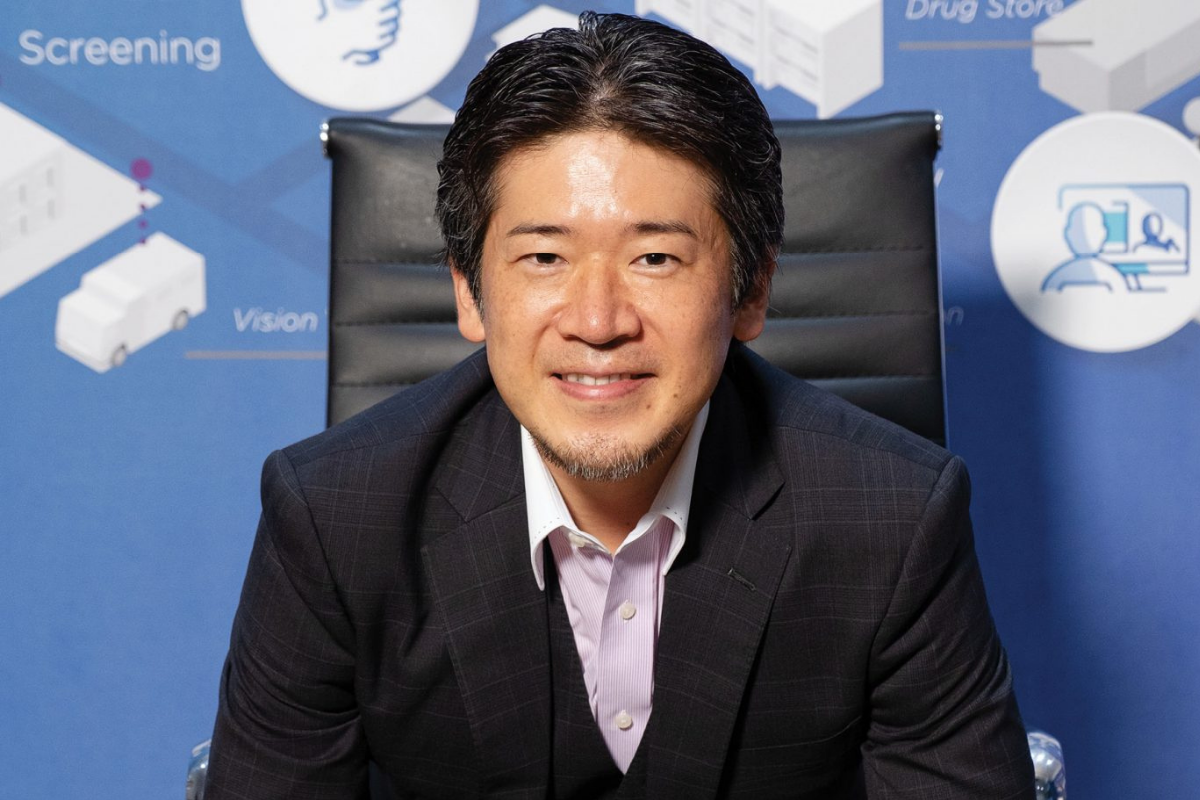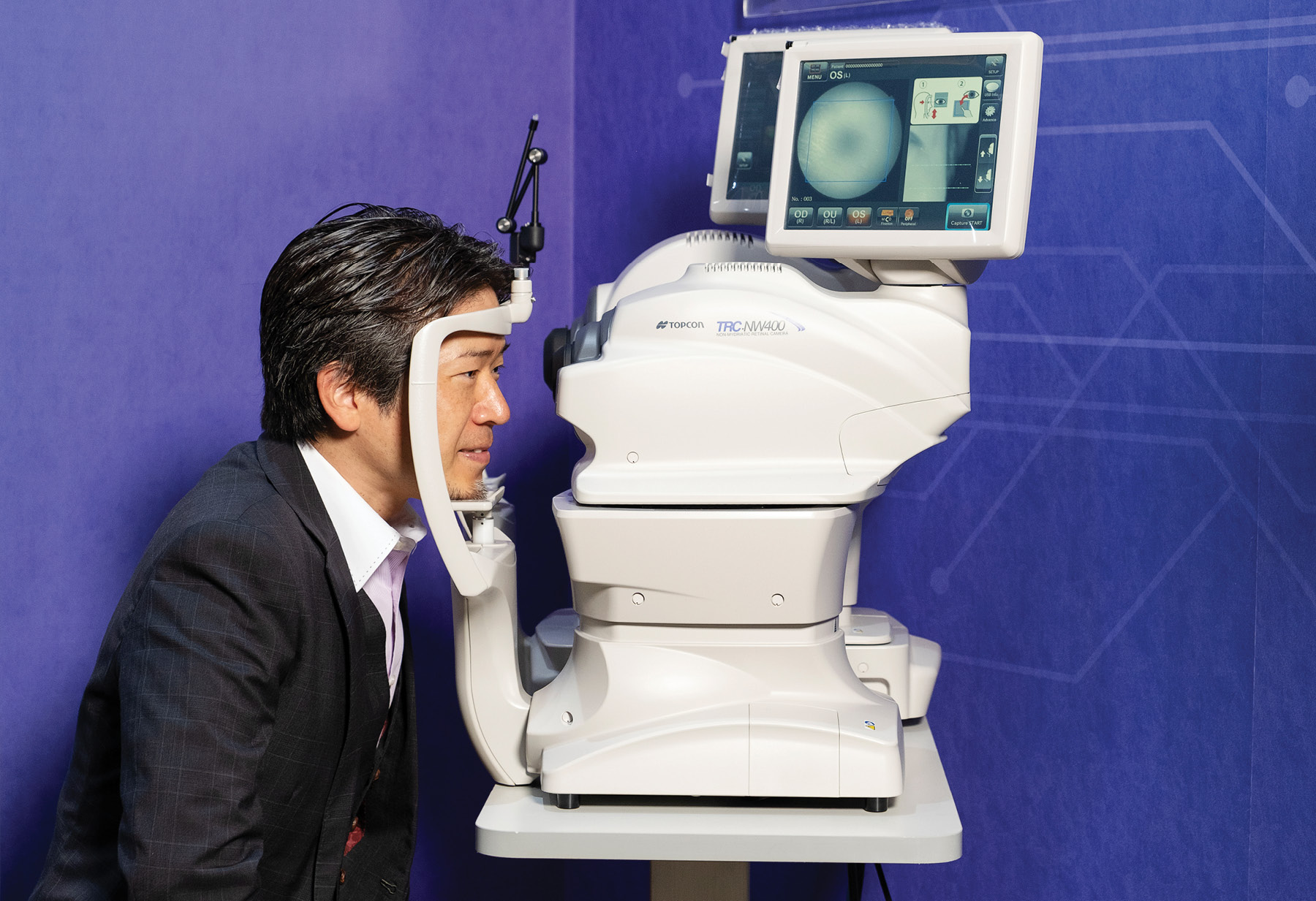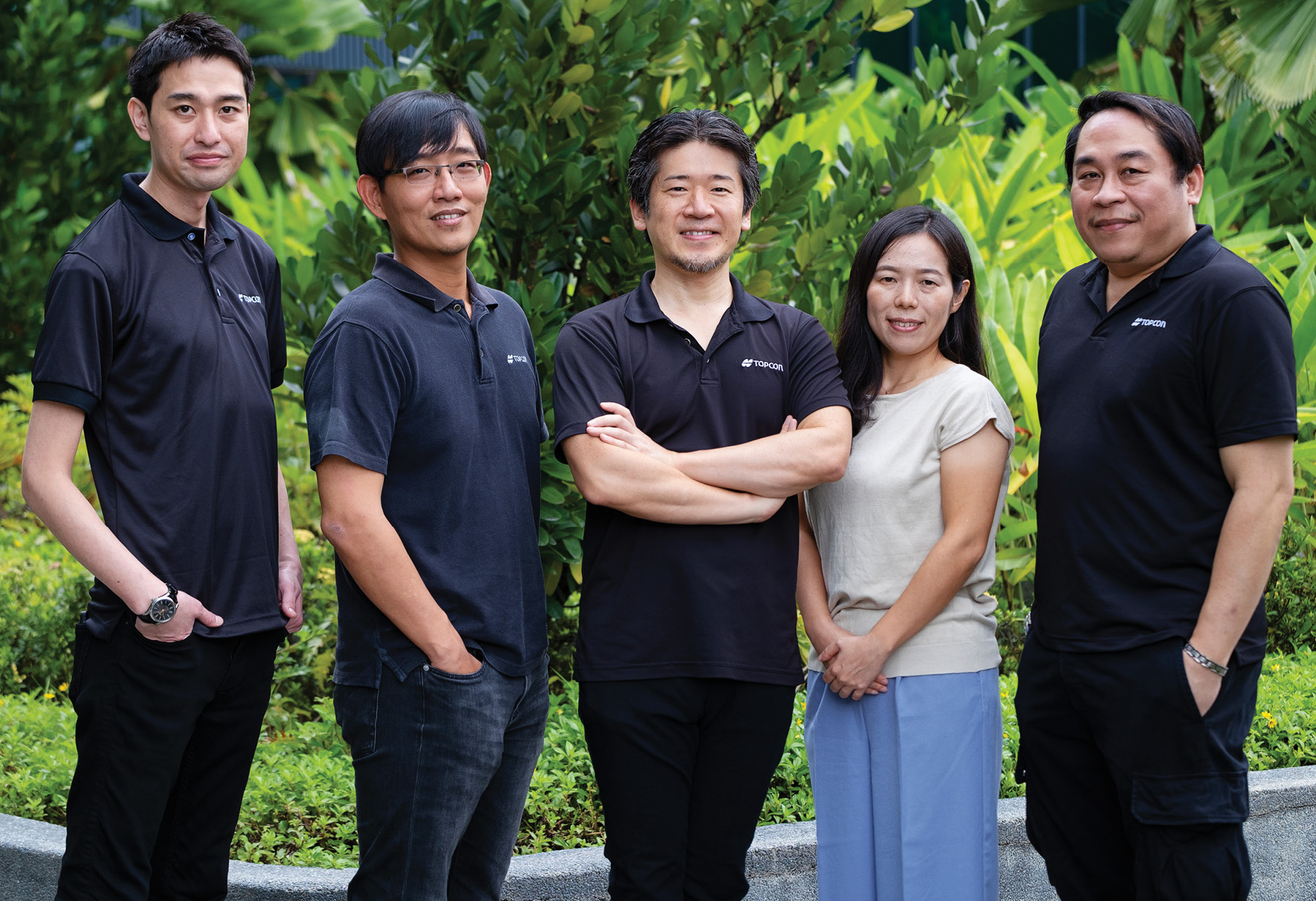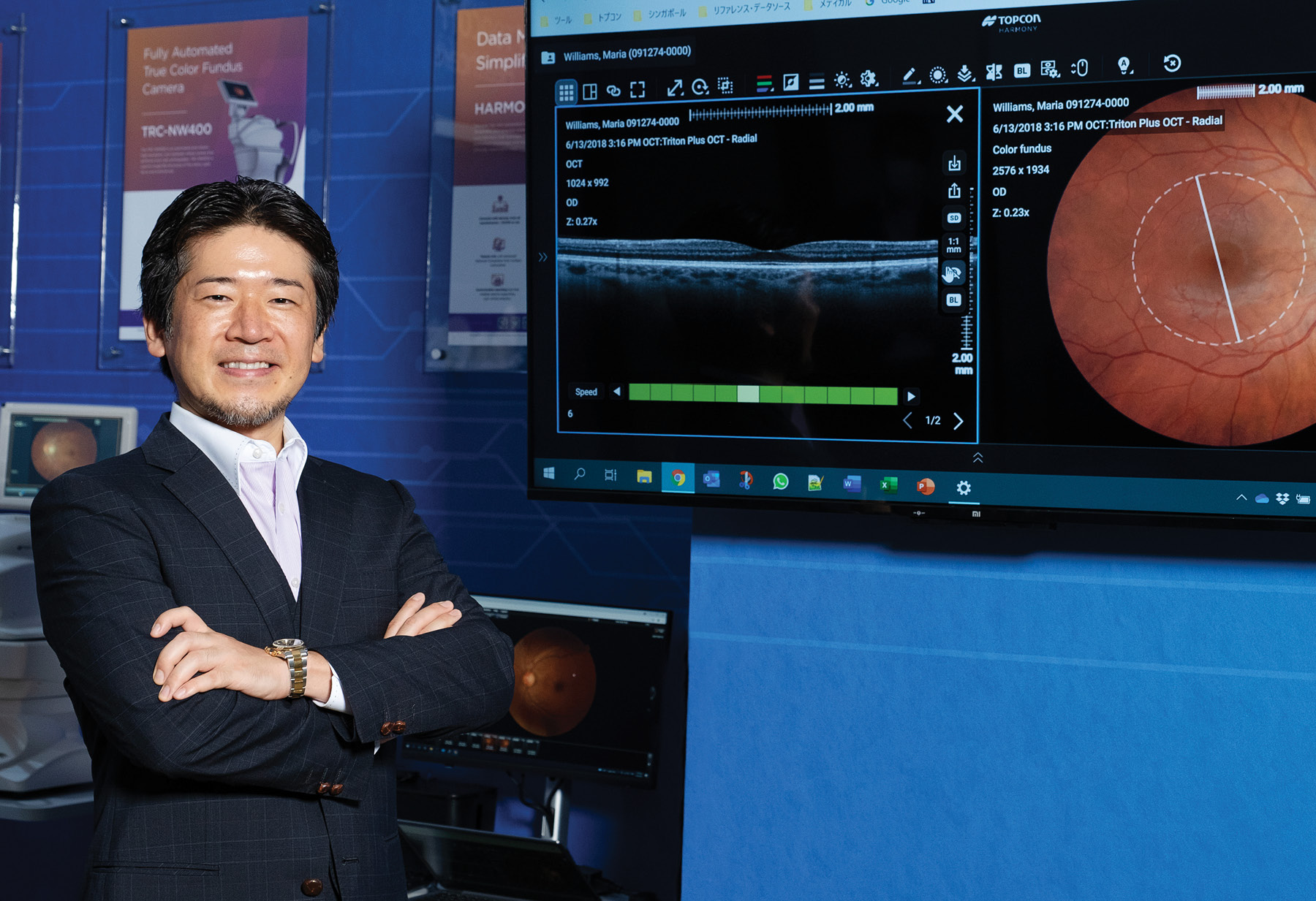Three years into his successful spell as Managing Director of Topcon Healthcare Solutions Asia Pacific and 18 months into his dual role as Managing Director of Topcon Singapore Medical, Leo Hiroshi Nagatake says he is focused on empowering healthcare service providers with smart and efficient technologies for enhanced patient care.

“That’s our vision,” Leo says. “Keeping pace with the ever-changing landscape of the healthcare industry, we organically integrate ophthalmic devices and software to offer the latest integrated solutions.
“The business volume in Singapore is limited due to a relatively small demand and its population. But having Singapore as the showcase, we are able to demonstrate more market presence in the region.”

COVID-19 caused a business downturn for Topcon, but we also realised it was a huge opportunity for us to transform our business model, especially in the ophthalmology and optometry industry.
The Japanese company founded in 1932 has been in Singapore since 1979, with Malaysia and Thailand following. It has also added many distributors in the region since, allowing it to grow into 18 countries.
A very stable entity for the last decade, Topcon Singapore is increasingly looking to transform from just a hardware selling business into a solution business – a process that actually began a year before Leo joined. The pandemic has been a huge catalyst for further change.
“COVID-19 caused a business downturn for Topcon, but we also realised it was a huge opportunity for us to transform our business model, especially in the ophthalmology and optometry industry,” he says. “The industry has quite outdated technology in hospital, clinics and optical stores.
“With safe distancing, there was also a need for solutions like telemedicine, and we launched a series of products, which enable our clients to provide eye examinations and diagnosis services even from remote places.
“Before the pandemic, customer awareness of such software was very low and there were concerns over information security. It has made all customers aware of the need for a remote solution.”
Global focus
In many ways, Topcon is unlike the majority of other Japanese companies. Most only develop for the domestic market, and many well-known Japanese conglomerates still maintain a disproportionate headcount in Japan compared to the proportion of their revenue.
“Topcon is really globalised,” Leo says. “More than 70 per cent of the headcount and 80 per cent of revenue is outside of Japan. All the global meetings are conducted in English. That information communication makes things very efficient because all the documents are being done in English instead of the local languages. So the information exchange culture in Topcon is quite amazing.”
Despite being a forward-thinking company, change is still Leo’s biggest challenge, both within his company and the industry.

“The industry we belong to is traditional in both a positive and negative sense, so changes are not always welcomed,” Leo admits. “People may feel comfortable and safe to do things in the way in which they are accustomed but it’s sometimes risky to do so without careful consideration as it can let the opportunity to improve slip through their fingers.
“The end users in the industry have been quite conservative in adopting the latest IT technology due to multiple security concerns and budget constraints. The recent pandemic changed this situation drastically. Although COVID-19 was a serious challenge and detrimental to us, it helped us to justify changes to transform our business model and adapt to the new normal.”
Good leaders need to have courage to change people’s thinking, and also correct past historical mistakes.
While change management can be challenging, Leo believes that being able to implement those changes means you have the makings of a great leader.
“Good leaders need to have courage to change people’s thinking, and also correct past historical mistakes,” he explains. “You also need to keep monitoring, take action and fine-tune later on. And maybe after a few years taking care of the consequences, the leader becomes a real leader.”
Leo goes on to reference the fact that in recent times, eye health has become a prominent global health issue due to a range of factors, including an ageing population and limited access to care.
“The cost of the rising demand for eye health is felt by everyone,” Leo says. “By patients who are often having to wait longer for treatment; by doctors who are struggling to keep up with the demand for care; and by healthcare systems that are paying for treatment of conditions that are more advanced due to the longer wait times patients are facing.”
Digital future
Like many organisations, the next two years will be about communicating with customers in a digitised and more efficient way – especially with regard to new products. “Although we have a good product, if we are unable to communicate to the customer, it is quite useless,” Leo points out.
If you hadn’t realised already, Leo’s business philosophy is very much based around problem-solving; defining the problem, trying to find solutions and then executing operations. In the optical medical world, that’s revolutionary.

Our focus is on delivering solutions that improve the quality of life for patients.
While he is the first to admit that a solutions approach is certainly not new, Leo is taking it to greater heights in his industry – wherever that might stretch. “We are not just pushing our business message to old customers,” he says. “We’re also taking it to other customers who can potentially be a part of the medical ecosystem.
“Our focus is on delivering solutions that improve the quality of life for patients by ensuring that healthcare providers have the tools they need to provide the best possible care.
“This includes more opportunities for patients to be screened for disease with our products like Harmony, which supports a better connected healthcare ecosystem. Patients receive the care they need in a timely manner with our data management platform, and advanced diagnostic equipment that supports faster, more accurate decision making.”
Proudly supported by:




